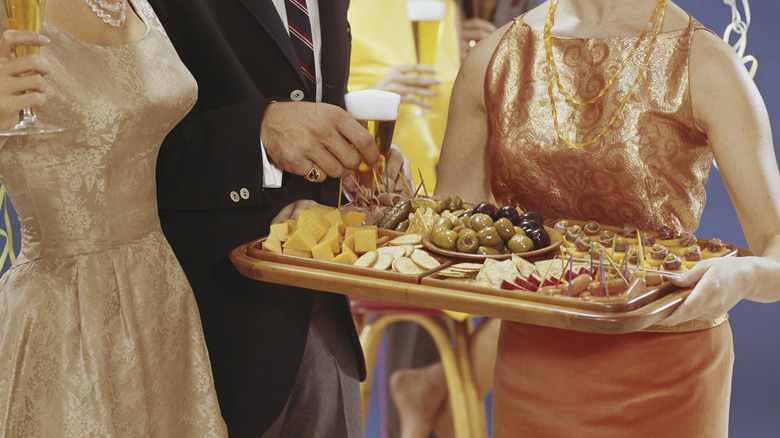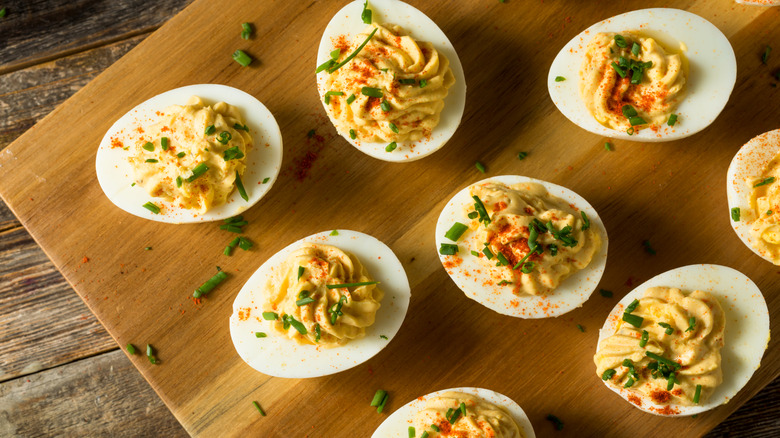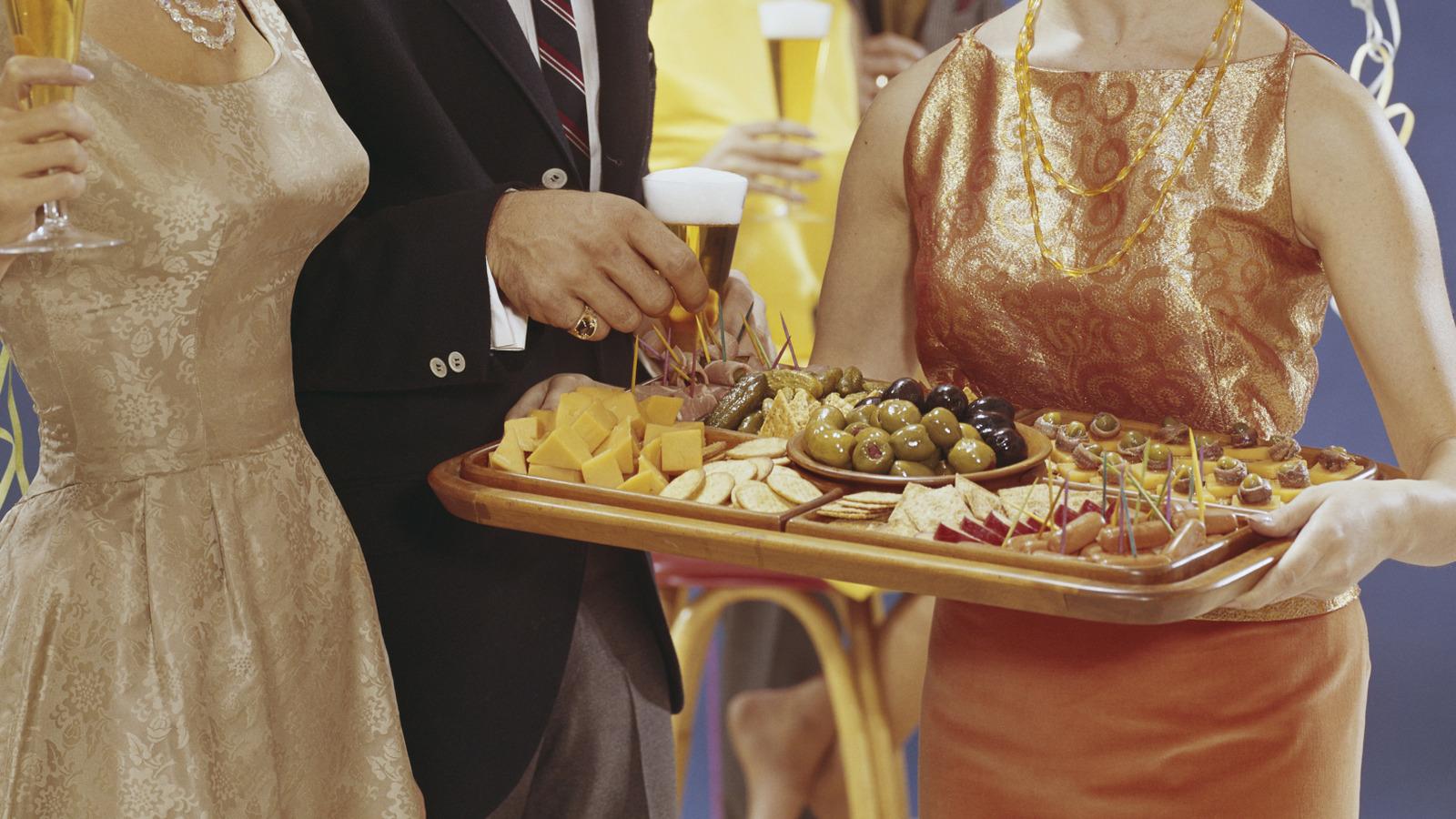
Tom Kelley Archive/Getty Images
A staple of 1950s culture in America was the cocktail party. The years following World War II were marked by a resurgence of traditional values. Women returned to the home, families migrated to the suburbs, and conventional material wealth became an important marker of achievement. All this was the perfect atmosphere for the cocktail party, with its formal dress codes and ample amounts of booze, to thrive. Crowd-pleasing appetizers were abundant, including shrimp cocktail, Jell-O molds, and one hors d'oeuvre that remains beloved to this day: deviled eggs.
Deviled eggs were all the rage in the '50s. Multiple deviled egg-based dishes appeared in a 1950 Betty Crocker cookbook that recommended both deviled eggs served solo or with other foods, including tuna and a plum tomato salad. If you've spent any time reading up on vintage fare, you know 1950s cookbooks were heavily focused on Jell-O. Deviled eggs served as the foundation of one of Betty Crocker's famous (some would say infamous) Jell-O molds: tomato aspic with olive-stuffed deviled eggs, served with thousand island dressing.
Part of the charm of '50s-era deviled eggs is their simplicity. Anyone can boil an egg, after all, and it's fairly simple to scoop out the yolks and mix them with mayonnaise, mustard, and spices like dill. In the '50s, presentation was as important as taste when it came to food. Perhaps this is why deviled eggs are often finished off with a dusting of paprika, which adds flavor and creates a charming aesthetic.
Deviled eggs actually have a very long history

Bhofack2/Getty Images
While deviled eggs conjure images of modern festivities, their history actually dates back to the 13th century. One of the earliest deviled eggs recipes comes from Ancient Rome, albeit it's a far cry from modern varieties. Rather than mashed egg yolks as a filling, the dish used raw eggs mixed with saffron, cloves, and marjoram.
Such versions of deviled eggs were commonly called stuffed eggs, the name deviled eggs not gaining steam until the 1700s. Despite its connotations, deviled in this case did not mean satanic but seasoned. Spicy, flavorful fare gained traction as the Spice Trade took off. In 1896, the first modern deviled egg recipe, which included mayonnaise, appeared in an Annie Farmer cookbook.
The origins of mayonnaise are actually related to the increased ubiquity of deviled eggs. How did the once gourmet saffron-laced stuffed eggs of the Roman age become a relatively accessible midcentury staple? While mayonnaise was not solely responsible, it certainly accelerated the trend. Originally a luxury item served at upscale restaurants like New York City's Delmonico, mayonnaise skyrocketed into popularity when the Hellmann's company began mass-producing the product in the early 1910s. By 1940, the condiment was a mainstay in deviled egg recipes.



